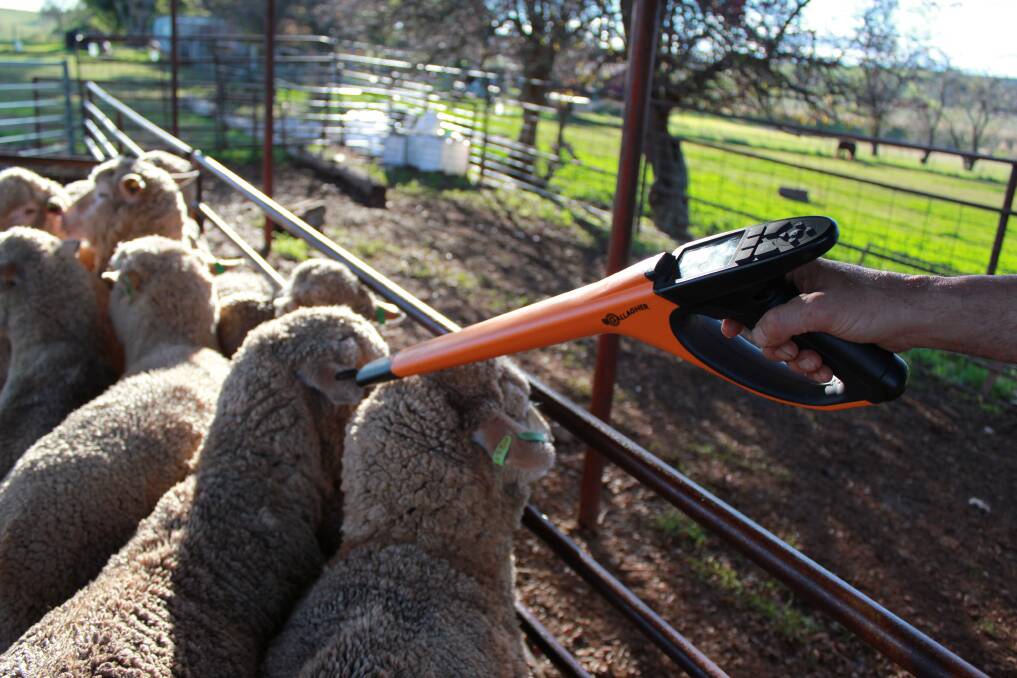
The heightened risk of emergency animal disease entering Australian shores has reignited the debate for mandatory electronic identification tags in sheep.
Subscribe now for unlimited access to all our agricultural news
across the nation
or signup to continue reading
But key industry voices are at loggerheads as to the rationality of the tags at this particular point in time, and they should be considered as part of a broader range of actions that the Australian livestock industry need to undertake, including the harmonisation of traceability standards.
Red Meat Advisory Council chair John McKillop, speaking at the Queensland Rural Press Club recently, said if foot and mouth disease arrived on Australia's doorstep, the sheep industry would very much lament its lack of action on electronic tags.
It was an insurance policy, he said.
"I have life insurance and never once have I regretted not claiming on it," Mr McKillop said.
"It's beyond me why we don't have electronic tags for sheep. With lambs making $200, to not put a $2 button in its ear because it's only going to be around for six months makes no sense.
"If we get FMD, the sheep industry will be the first to think, I wish we had done that some time ago.
"No one will be saying they wish they hadn't bothered with NLIS, believe me."
Thomas Elders Market consultant Andrew Whitelaw said tracking and containing the disease would be crucial to limiting its spread and reducing the length of time any export ban was in place.
"Many are against EID tags due to the cost. I can assure you that $1.30 on a tag is money well spent. It is cheap insurance, provided all the systems are in place," Mr Whitelaw said.
But WoolProducers Australia CEO Jo Hall said their comments are out of step, and mandating EIDs as an insurance policy is too simplistic of an argument.
She said a nationally harmonised livestock identification system must be put into place.
"It is a really simplistic approach to say that just by putting an EID in a sheep is going to mitigate the impacts of an emergency animal disease on the sheep flock," Ms Hall said.
"EIDs are an important part of a broader range of actions that the Australian livestock industries and governments need to undertake to prepare for an EAD, but the first thing that needs to happen is agreement amongst the state jurisdictions on business rules and how the national traceability and supporting mechanisms all interact between the states."
She said WPA is supportive of EIDs for biosecurity purposes, but only when the underpinning traceability systems are nationally consistent.
"Until we have a guaranteed commitment from all state governments that they will implement the business rules consistently across the country along with the establishment of a national database for all FMD susceptible species and with equitable funding arrangements between industry and government, we will not be supportive of mandatory EIDs," Ms Hall said.
ALSO READ:
SheepProducers Australia CEO Bonnie Skinner said the rapid and reliable tracing of sheep and goats plays a significant part in emergency disease response.
And she said the faster the animals can be traced, the greater the chance of controlling the disease outbreak, minimising its economic and social effects.
"Electronically identified livestock can be traced with greater efficiency and accuracy than visually identified livestock," Ms Skinner said.
"The benefits of improved traceability to biosecurity and market access will accrue across the entire value chain, including government."
Since 2018 SPA has been working with SAFEMEAT and its members on the development of reform recommendations to the National Livestock Identification System.
Ms Skinner said SPA is supportive of whole-of-system traceability reform, of which individual electronic identification is a vital component.
"This includes investment into the database, sustainable and equitable cost sharing arrangements and the establishment of a national governance body that has the ability to hold all stakeholders accountable," Ms Skinner said.
Ms Skinner said SPA is committed to progressing discussions for the implementation and funding of a national EID system for the sheep industry in conjunction with these broader NLIS reform measures.
And she said the cost to transition from mob-based to individual identification, and the associated system changes required to support that transition, is the most significant step in evolving into a more robust system.
"For any system to succeed, the whole supply chain, including government, need to have ownership of the system and be capable of resourcing and implementing it," Ms Skinner said.
"It must be supported by adequate upfront and ongoing investment, technical assistance in the field and robust compliance monitoring.
"This is the responsibility of all participants in the supply chain."
She concurred Ms Hall's comments, saying the key principle underpinning the evolution of a traceability system must be the harmonisation of traceability standards and centralisation to create a truly national system.
"Effective traceability relies inherently on industry compliance and national consistency," Ms Skinner said.
"The simple reality is that disease does not respect jurisdictional boundaries."
Start the day with all the big news in agriculture! Sign up below to receive our daily Farmonline newsletter.


